Glen Snow – 23 October, 2013
If one was to find the single ‘correct' noun or verb for what this work is, it may best be located as drawing: drawing with projected animations of light, cast shadow, cut foam board, cord, paint and ink. The linear and its delimiting of space reigns supreme. Yet its hybrid participation in sculpture, installation, painting and moving image presents perhaps its first philosophical engagement…
30upstairs is located as its name states, at number 30 Courtney Place, upstairs and off the street. It is not a dealer gallery, but was established by its owner Mal Brow to hold a unique position in Wellington, housing its owner’s collection and providing a project space free of commission to emerging and established artists. Its rooms are unusual in terms of layout and the building has its own quirky character despite the neutralising whitewash of the walls. Because of its separate and individual spaces it can often house more than one solo show at once. For now however, I have come to visit the Auckland artist Karyn Taylor in her exhibition entitled Abstract Philosophy.
I’m initially struck by the elegance of this work. With a lightness of touch, it seems to have no difficulty bending the building’s personality to its will. Without any hue to speak of one is left to consider shadows, light and the thickness of space. What is empty is made to feel full: pregnant with potential.
If one was to find the single ‘correct’ noun or verb for what this work is, it may best be located as drawing: drawing with projected animations of light, cast shadow, cut foam board, cord, paint and ink. The linear and its delimiting of space reigns supreme. Yet its hybrid participation in sculpture, installation, painting and moving image presents perhaps its first philosophical engagement. For instance, Unified Field Theory and Unified Field Theory II, seem to occupy both a sculptural and painterly space. These two works would not look out of place hung on a wall: framed like the pictures they are. Yet they hold floor positions.
Something else also asserts their sculptural presence, though more difficult to ascertain at first glance. Subtle tonal imagery appears like a painterly trompe l’oeil of architectonic angles on their surfaces, but in fact the illusion is the sense of illusion itself, for this is sculptured paper - or more correctly, folded drafting film -catching shadows beneath the surface of their outer glass. Their impurity as sculpture-painting hybrids, with their folded surfaces, take further steps in the challenge to formalist philosophies of the modernist era, around the discreteness of each art form and the necessary flatness of painting itself.
The titles of these works however, along with the others, reference another kind of theorising. Taylor is clearly interested in physics and, on the whole, the mood of her art is intellectual and thoughtful, with little colour for the emotions. It seems to ask for pause, silence, measurement and contemplation. We are left to wander and wonder. The show’s title, Abstract Philosophy, suggests that mental activity is made as material activity, and because this work often makes use of animated projections, it seems inconclusive and open ended in its formulations, positing endless possibilities into its equations.
The artist’s own statement for the show may require a little further research for the viewer, though the clue is in the first line. For her there is something about the “space between the potential and the actual; the transitional state between energy and matter.” Those are quite ordinary words, but they are loaded into a sentence that stretches at the limits of everyday meaning. This is because Taylor asks us to enter the world of the ‘quantum superposition‘, and it’s this that requires further investigation to understand.
It seems then, that a way of comprehending this work lies in this ‘superposition‘ sense, where there is potential for multiple outcomes even when only one will be experienced or actualised for the viewer in any one moment. It is an interesting idea to hold on reflection, for even when Taylor gives possible variations of a theme through her animated lines and shapes, we must experience each one moment by moment. Yet she is implying that there are a variety of probable moments where her object might be understood as complete. That they continue to open up to other possibilities.
An example can be taken from Potentially Actual, which is a small wall mounted sculpture that seems to borrow its name from that first explanatory sentence of her statement. This is a delightful piece which for all its serious weighting has a playful, though commanding, presence in the side room it occupies. Its dimensions are given as variable because while it’s made of an ‘actual’ foamcore structure painted in gesso, it is completed through the ‘potential’ of two connected rhombus forms, projected in animation. These rhombi appear to morph as one and fold back into apparent three dimensions behind the main structure, while transforming continuously and taking up new possible postures on the wall.
What is ‘potential’ and what is ‘actual’ in the work opens these ideas up for consideration, where the actual is made to be only probable, and potential hovers at every moment. The actual becomes blurry, in designating only one potential outcome, and all potentials carry the weight of actuality.
Considering all this, the artwork itself is not so much illustrating the superposition, as using it: starting there in order to find a contemporary language for the formalism it’s involved in. Tethered Logic for instance, continues this idea where two folded acrylic rods seem connected by the animated line between them. The line shifts and bends across the wall, marking its parameters. It’s also another example of how Taylor has put the gallery walls of this eccentric interior to work as part of her creation, by using its wall struts to delimit and focus attention.
Meditating on the animated works, it is interesting then, looking again to the still installs. Abstract Potential is clearly site specific, and would not look the same anywhere else. But more than this, the painted grey lines in gouache seem to trace possible positions, offering a potential placement for the cord to take up. At other times it implies possible shadows, while the room’s lighting offers up other shadows, cast from the cord, which both maps out its space on the wall and cuts into the space of the room to the floor.
Opening, made of Glowire in its darkened room, plays on the eyes, and seems to vibrate and hover in the blackness. It is a rectangle, scaled like a door, but twisted so that as one walks around it, it collapses into new form: closing in on itself into triangular shapes. It is a portal of sorts, which is only open from one standpoint. The twist in its shape gives it the potential to appear as more than one actualised form.
Taylor has also included some ink drawings in this show, though I am not certain these add anything to her explorations. While perhaps interesting as sketches playing off the edges created through paper folds, the four works - given the same title, Quantum Rhythm (and II, III, IV) - would seem best suited as an aside, like notations in a sketch book. Giving them the weight of framed pictures, and the prominence of a place on the wall, seems to overstate them and their importance in relation to the other work within the exhibition. I would have preferred to see them simply bound in a workbook, since they seem more like notations than fully formed work.
Over all however, this is an impressive and rewarding exhibition. Taylor makes great use of negative space so that what might be otherwise overlooked as empty, is now suddenly architecturally significant and bound to the issues of the artwork. She seems to thicken space until it occupies a place among her objects and their potential. The work itself, while motivated by a complex theory like quantum superposition, manages to tread a light path that also feels quite playful for all its sobriety.
Glen Snow
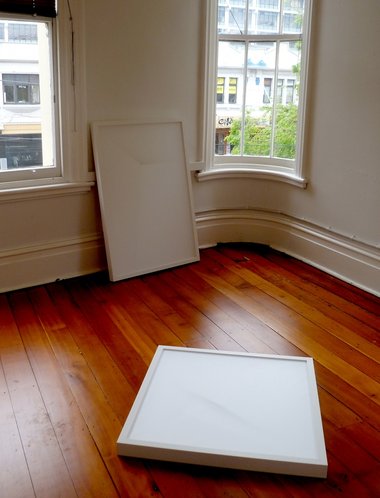
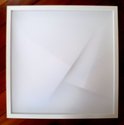



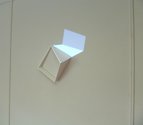
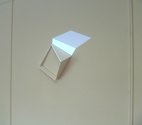
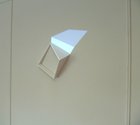




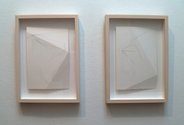
 Advertising in this column
Advertising in this column Two Rooms presents a program of residencies and projects
Two Rooms presents a program of residencies and projects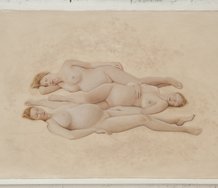
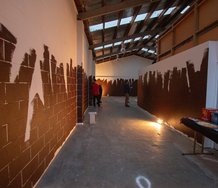
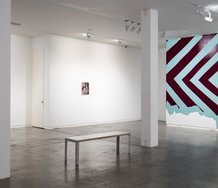
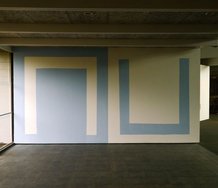
This Discussion has 0 comments.
Comment
Participate
Register to Participate.
Sign in
Sign in to an existing account.